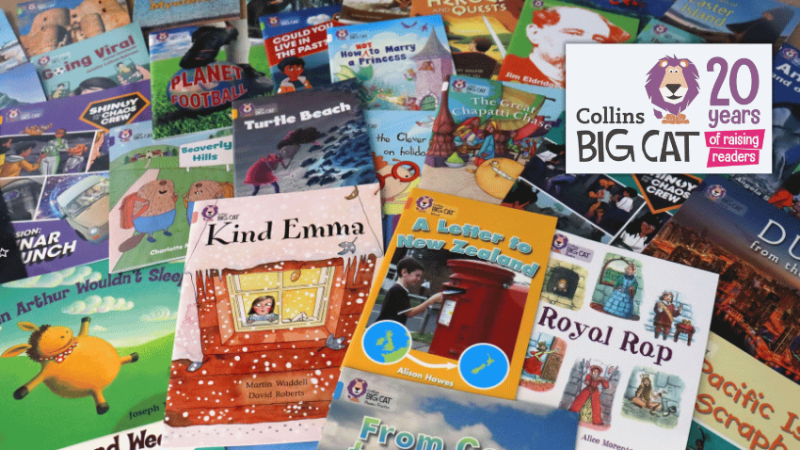Teaching grammar – how to put it in context

Rote learning and drills may help (some) children pass SPaG tests – but real progress only happens when we put the content in context, argues Rachel Clarke

- by Rachel Clarke
- Experienced educator, consultant and writer specialising in primary English Visit website

Teaching grammar without context is a little like sharing a meme of a literary quote without having read the book from which it has been taken.
Yes, we can drill our pupils to spot grammatical features and name them; but without seeing those features at work in the context of real texts, children can’t really understand how they work as tools of communication.
The view that grammar is best taught in context is not a new one. It’s an approach supported by research, including that of Professor Debra Myhill at Exeter University, and is something that most teachers aspire to do.
However, despite this, many still find themselves drilling grammatical terminology in stand-alone lessons in preparation for the SPaG test at the end of Key Stage 2.
So how can we set about teaching grammar in context so that children remember it?
Grammar objectives
In the first instance, we need to map out the objectives required in our year group; ensuring that every objective is included.
Think about the model texts you want to use with children. Recognising that certain text types lend themselves to specific grammar objectives can be particularly useful when you do this.
For example, if you need to teach command sentences, using an instructions model text, such as a recipe, makes sense.
It’s important to include direct teacher instruction in your grammar planning.
You’ll not want to take a directive approach in all lessons, but when introducing objectives, direct instruction means you can be sure that the mental models children create are accurate.
Using the relevant grammatical terminology as you explore your model text ensures that children see the grammar in a meaningful context.
Quick tip:
After teaching children about a target objective through the model text, set them a treasure hunt task.
Can they find examples of the objective in their reading books? This could be a homework activity or something you ask them to do in pairs or small groups.
You could extend this activity, for example, by challenging them to note whether specific text types use the feature.
Equally, you could support pupils by providing accessible texts that you know contain the features you want them to locate.
Grammar practice
Once you’ve pointed out the target objective in your model text, children need opportunities to practise using it.
This type of low-stakes activity means they can develop their mental models without feeling overwhelmed.
Activities such as labelling, filling in cloze procedures and completing sentence starters are perfect for this kind of learning.
Quick tip:
Think about progression and what children already know. For example, if teaching pupils in upper Key Stage 2 to use dialogue to develop character and action, you may need to track back to earlier work on adding speech marks, using the range of speech punctuation, and using synonyms for ‘said’ in reporting clauses.
Revisit these previous objectives if it will help children access their existing mental models. And don’t be afraid to use pre-prepared resources!
Grammar recap
Teaching a concept or rule once only is unlikely to ensure deep learning, so looking at how to space repetition so that children encounter each objective several times over the year is a good approach.
Trending
It’s beneficial to use different text types, too – so the command sentences I mentioned earlier, for example, could also be explored in a persuasive article, such as a tourism leaflet (‘Visit Yorkshire!’).
With each successive encounter with the objective, pupils modify their mental model and come to deepen their understanding of how an aspect of grammar can be used in real texts.
Quick tip:
Create a set of grammar instruction cards. Children could answer these individually, in pairs, groups or as a whole class.
Prompts could include: write me a sentence using the past progressive form of verbs; write me a sentence including an expanded noun phrase; write a sentence with a fronted adverbial.
Once you’ve made the cards you can swap them in and out based on assessment for learning (AfL) and the ongoing grammar objectives you cover with the class.
Applied grammar
When children understand the grammar we’ve taught them, they can use it to write their own texts, communicating for different purposes and audiences.
Model texts play an important role in this process, as they give children an example to base their own texts upon, exemplifying the target grammar objectives.
Quick tip:
Knowing how to use a grammatical feature to improve a piece of writing is a good way for children to apply their knowledge.
Giving them a basic sentence such as ‘The dog walked.’, and asking them to improve it using the target objective (e.g. add expanded noun phrases, or use a fronted adverbial) is a quick and easy way to check pupils’ understanding.
Grammar revision
Giving pupils opportunities to practise using their stored knowledge helps them to draw on it when they need it.
This is why it’s worth planning opportunities for children to revisit and revise their understanding as part of any grammar teaching sequence.
Quick tips:
Low-stakes testing is a good way to help children retrieve and recall their grammatical knowledge.
Testing doesn’t need to be formal – for example, you could ask the class to write three examples of a question, or to circle all the verbs on a grid of words containing a variety of word families.
This will give you the vital assessment knowledge that you need to plan well-pitched and progressive learning, and it will enable the children to recall and revise existing knowledge.
Using tests that replicate the question types from the SATs means that pupils become accustomed to the question formats of the tests.
It’s worth remembering that 3–5 questions planned into a teaching sequence is plenty.
Rachel Clarke is director of the Primary English literacy consultancy, and has over 20 years’ experience in primary education, in which time she has been a SENCO, English subject lead and deputy headteacher. Read advice for teaching SPaG consistently throughout your school.










